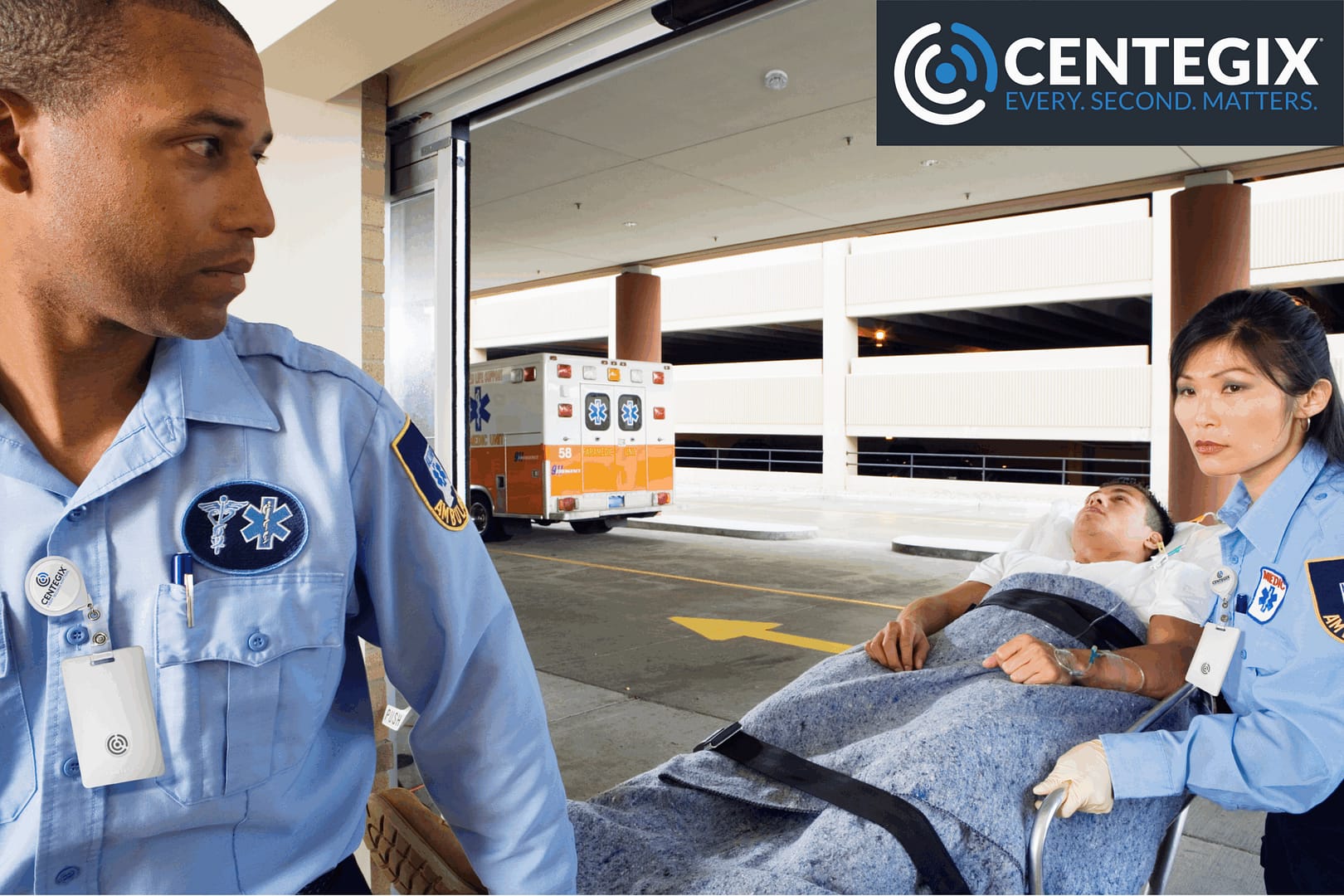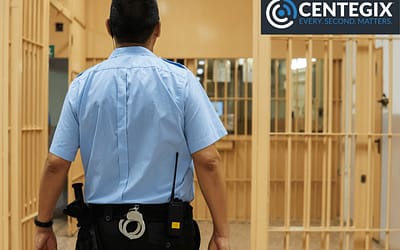The healthcare industry is facing a growing problem that frankly, it shouldn’t have to. A surge in violence in healthcare facilities threatens the safety and well-being of staff and patients across the country. In environments typically thought of as safe havens for healthcare professionals and those in need of care, violence is putting innocent people in danger.
Healthcare organizations are responsible for being proactive and forward-thinking with their safety plans. Outdated security systems, plans, and technology aren’t good enough. Facilities require innovative solutions built to improve response times when emergencies like physical altercations occur.
Investing in technology such as wearable duress buttons creates a direct connection to responders, accelerates response times, and promotes a culture of safety in hospitals and medical clinics.
The State of Workplace Violence in Healthcare Facilities
It’s easy to assume that those who devote their lives to caring for others wouldn’t be affected by workplace violence. In reality, healthcare professionals make up only 10% of the workforce but experience 48% of nonfatal injuries due to workplace violence.
Violent incidents can occur when patients or family members, possibly experiencing the worst days of their lives, become frustrated with long wait times or treatment they feel was unsatisfactory. These emotionally charged situations often result in verbal abuse or physical assault directed toward doctors, nurses, or other healthcare professionals.
Active shooter incidents in hospitals are also a growing concern. Perpetrators either target specific healthcare professionals due to a treatment outcome or randomly enter facilities to commit acts of violence. Regardless of the motive, these events are particularly dangerous in environments where patients are unable to react due to health conditions and staff are caught off guard. Healthcare organizations and workers must rethink their approach to safety in response to the uptick in violence.
Recent Active Shooter Incidents in Healthcare Facilities
On February 2, 2025, a man entered the intensive care unit (ICU) of UPMC Memorial Hospital in Pennsylvania with a semi-automatic handgun. After taking a nurse hostage, he opened fire, injuring a doctor, a nurse, a custodian, and two police officers. He also killed another officer before law enforcement shot and killed him as he exited the ICU. In this incident, UPMC police were the first to respond. It was only after the perpetrator fired shots at them that local law enforcement was called.
On June 27, 2025, a patient at Aultman Hospital in northeast Ohio grabbed a gun from a facility security guard and shot a hospital worker in the abdomen. The victim survived, and the shooter is facing multiple counts of assault. Days later, another patient entered Aultman Hospital with a gun and discharged it in an exam room. Thankfully, no one was injured in that incident.
These events show the importance of collaboration between healthcare organizations and local law enforcement. Even with weapons detection and other protocols in place, there is an ongoing need for strong communication and cooperation between local law enforcement and healthcare facilities.
Standard Police Presence in Medical Facilities
The presence of law enforcement in hospitals and emergency rooms isn’t unusual. A review by Penn LDI found that in one urban ED, an officer was present 31% of the time, and outlined the conditions that often lead to police presence:
- Local policies may enable law enforcement officers to transport injured patients to the ED for urgent care or accompany incarcerated individuals for necessary medical treatment.
- Healthcare professionals may call local law enforcement if they suspect abuse or maltreatment of children or vulnerable adults. They may also contact law enforcement to respond to threats of violence.
- Law enforcement may enter EDs to conduct routine procedures such as questioning patients who witnessed a crime or to collect evidence.
While these circumstances increase the need for law enforcement in emergency departments, some data suggests negative impacts on patient trust and continuity of care. Regardless, healthcare organizations have a responsibility to protect their patients and providers, which sometimes requires the help of law enforcement. Offering healthcare facilities a direct line of communication with law enforcement and 911 dispatch, without having to rely on physical police presence in clinical settings, offers significant benefits to safety and community care.
Why 911 Integration is Critical to an Effective Safety Plan
When someone dials 911, the call gets routed to a PSAP based on location. A Public Safety Answering Point (PSAP) is a dispatch center that receives calls and initiates emergency responses. Most PSAPs are operated by law enforcement agencies, emergency medical services, and fire departments.
Dispatchers gather information, determine the nature and severity of the situation, and activate an emergency response from local police, paramedics, or firefighters.
When violence erupts in a hospital, authorized personnel contact 911 to get help. However, manual communication via a phone requires multiple steps and leaves room for misinterpretation of key details.
Integrating a hospital’s wearable duress button technology with a PSAP is more effective. This enables designated healthcare professionals to activate a quick response from local 911 dispatchers, at the push of a button, without the need for a phone call. This increased efficiency accelerates emergency response, saving time and potentially lives.
In addition to rapid response, integration with 911 dispatch offers several other benefits.
- Safety teams can create more effective protocols around workplace violence and campus-wide threats.
- Staff can take immediate action in an emergency, saving valuable seconds.
- Healthcare professionals who witness potentially life-threatening situations are empowered with a direct line of communication to first responders.
Depending on the technology leveraged, wearable duress buttons also have the ability to show 911 dispatchers the exact location where help is needed on a digital map, which supports more accurate emergency response, and may integrate with additional tools that drive efficiency and situational awareness.
Chief Jeri Williams, a 33-year law enforcement veteran and former Chief of Police for the Phoenix Police Department, shared the impact this can make on outcomes. “Mapping is critical because you’ve got to know where to send the resources”, she explained. “If we have real-time information with accuracy, we’re able to get to you faster. Those seconds can make a life-or-death difference.”
Healthcare facilities across the country are taking safety technology a step further by integrating with their local 911 dispatch center. Doing so gives staff the confidence to make quick decisions when violence occurs.
Customizable 911 Integration with CENTEGIX®
CENTEGIX CrisisAlert™ empowers healthcare professionals to take action when violence threatens the well-being of staff and patients, from the everyday to the extreme. This discreet, wearable duress button enables doctors, nurses, and all facility employees to immediately summon internal support when needed, promoting de-escalation before incidents become violent.
In the rare case of an active shooter or other campus-wide threat, CrisisAlert can also notify 911 dispatchers. Many healthcare facilities prefer to limit the responsibility of triggering a campus-wide alert to their C-suite or on-site safety and security leaders. Because of this, an organization can customize access to this feature to suit its current protocols and policies, ensuring maximum preparedness and control.
CrisisAlert was designed with innovative safety features for efficient communication and emergency response.
- Easy functionality provides discreet activation, so initiating an alert doesn’t escalate an already tense situation.
- Users can activate an alert anywhere on the property, including private examination rooms, parking lots, emergency bays, and external walkways.
- Precise location identification helps first responders quickly pinpoint where an incident is.
- CrisisAlert operates on private LoRaWAN and Bluetooth networks, eliminating the need for a Wi-Fi signal or cellular service to send an alert.
- A wearable duress button ensures anyone can summon help immediately, without having to locate a static button or call box. eliminates restrictions to accessing help, communication gaps, and response delays.
CENTEGIX Safety Blueprint® adds another layer of protection during critical emergencies. This digital mapping technology displays the facility’s layout so safety teams and security personnel can see precisely where a CrisisAlert notification was activated. Healthcare organizations can share their digital maps with first responders so law enforcement has vital information before they arrive on the scene. In situations where seconds matter, Safety Blueprint makes rapid response possible.
Prepare for Any Scenario With CrisisAlert
CENTEGIX makes 911 integration easy with CrisisAlert—a wearable duress button that puts the power of rapid emergency response in your hands. Learn more about CrisisAlert to see how it can strengthen safety plans in your facility.












